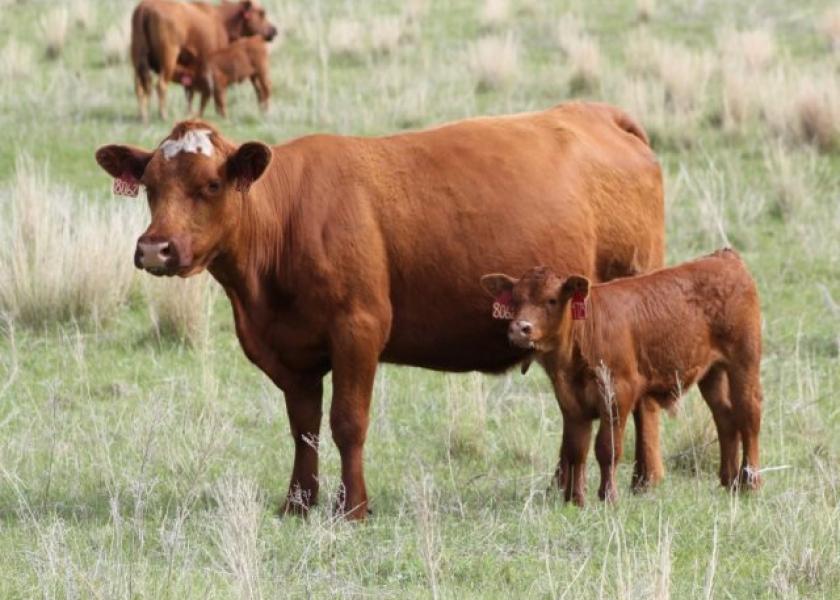Genetic Thieves: How Much Are They Costing You?

Genetic thievery in commercial herds! It’s a real problem, though it often goes unnoticed. Calves with bottom-end genetics pull average weights down and shrink the size of your calf check. They take money out of producer pockets and vaporize it into thin air. The good news is that, with a little work and attention, this situation can be corrected.
Need evidence that genetic thieves may be at work in your cowherd? Glad you asked. The table below compares the genetic top and bottom half of a 46 head calf crop in a single Missouri herd. These crossbred calves were born in the fall of 2021, and contain Angus, Red Angus and Hereford influence. All 46 calves were tested with Igenity Beef®. Then their individual weight information was split into two groups – top half versus bottom half, based on their average genomic scores for WW and ADG. Igenity Beef uses a 1-10 scale with higher scores indicating greater genetic merit.
As shown in the table, calves in the top half group averaged 5.9 out of 10, which is a strong genomic score for combined weaning weight and average daily gain potential. The bottom half group was weak, weak, weak at only 2.8 out of 10, suggesting below average growth ability. They are the genetic thieves, as we’ll see shortly.

The next question a thinking person will ask is, do these differing genomic scores translate into real-world weight differences? The answer is YES. On a sex- and age-constant basis, the top-half calves with stronger growth genetics weighed 53 pounds more when weaned and adjusted to 205-days of age. At 263 days of age (58 days post weaning), the difference had grown to 59 pounds, and you can be sure this spread will continue to widen all the way to harvest.
The math at say $1.80 per pound calculates to a value difference between these top and bottom half genomic groups right around $100 per head. That’s why we say the bottom-end calves are genetic thieves. These calves steal pounds and money away from the bottom line, yet they often remain unchecked. Low genetic merit calves will reappear year after year, that is, until the owner or herdsman decides to quantify the genetics he or she is producing and do something about it.
If you want to avoid genetic thievery so it does not cost you a pile of cash, contact Nate Smith, General Manager at Top Dollar Angus. His contact information is nate@topdollarangus.com or 620-546-4839.
Tom Bring is CEO of the Red Angus Association of America.







